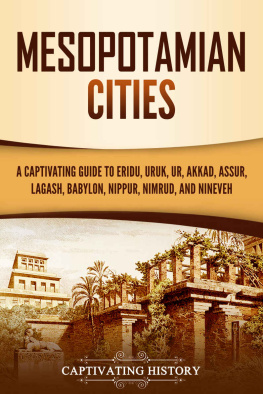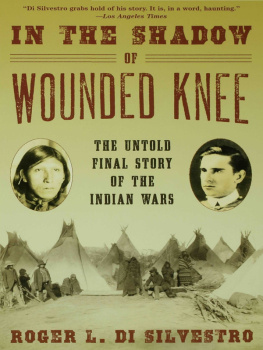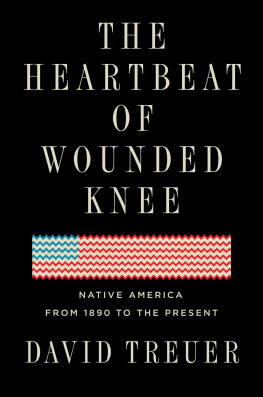Captivating History - The Indian Wars: A Captivating Guide to the American Indian Wars, Battle of Little Bighorn and Wounded Knee Massacre
Here you can read online Captivating History - The Indian Wars: A Captivating Guide to the American Indian Wars, Battle of Little Bighorn and Wounded Knee Massacre full text of the book (entire story) in english for free. Download pdf and epub, get meaning, cover and reviews about this ebook. year: 2019, genre: History. Description of the work, (preface) as well as reviews are available. Best literature library LitArk.com created for fans of good reading and offers a wide selection of genres:
Romance novel
Science fiction
Adventure
Detective
Science
History
Home and family
Prose
Art
Politics
Computer
Non-fiction
Religion
Business
Children
Humor
Choose a favorite category and find really read worthwhile books. Enjoy immersion in the world of imagination, feel the emotions of the characters or learn something new for yourself, make an fascinating discovery.

- Book:The Indian Wars: A Captivating Guide to the American Indian Wars, Battle of Little Bighorn and Wounded Knee Massacre
- Author:
- Genre:
- Year:2019
- Rating:3 / 5
- Favourites:Add to favourites
- Your mark:
- 60
- 1
- 2
- 3
- 4
- 5
The Indian Wars: A Captivating Guide to the American Indian Wars, Battle of Little Bighorn and Wounded Knee Massacre: summary, description and annotation
We offer to read an annotation, description, summary or preface (depends on what the author of the book "The Indian Wars: A Captivating Guide to the American Indian Wars, Battle of Little Bighorn and Wounded Knee Massacre" wrote himself). If you haven't found the necessary information about the book — write in the comments, we will try to find it.
Captivating History: author's other books
Who wrote The Indian Wars: A Captivating Guide to the American Indian Wars, Battle of Little Bighorn and Wounded Knee Massacre? Find out the surname, the name of the author of the book and a list of all author's works by series.
The Indian Wars: A Captivating Guide to the American Indian Wars, Battle of Little Bighorn and Wounded Knee Massacre — read online for free the complete book (whole text) full work
Below is the text of the book, divided by pages. System saving the place of the last page read, allows you to conveniently read the book "The Indian Wars: A Captivating Guide to the American Indian Wars, Battle of Little Bighorn and Wounded Knee Massacre" online for free, without having to search again every time where you left off. Put a bookmark, and you can go to the page where you finished reading at any time.
Font size:
Interval:
Bookmark:
The Indian Wars
A Captivating Guide to the American Indian Wars, Battle of Little Bighorn and Wounded Knee Massacre
Copyright 2020
All Rights Reserved. No part of this book may be reproduced in any form without permission in writing from the author. Reviewers may quote brief passages in reviews.
Disclaimer: No part of this publication may be reproduced or transmitted in any form or by any means, mechanical or electronic, including photocopying or recording, or by any information storage and retrieval system, or transmitted by email without permission in writing from the publisher.
While all attempts have been made to verify the information provided in this publication, neither the author nor the publisher assumes any responsibility for errors, omissions or contrary interpretations of the subject matter herein.
This book is for entertainment purposes only. The views expressed are those of the author alone, and should not be taken as expert instruction or commands. The reader is responsible for his or her own actions.
Adherence to all applicable laws and regulations, including international, federal, state and local laws governing professional licensing, business practices, advertising and all other aspects of doing business in the US, Canada, UK or any other jurisdiction is the sole responsibility of the purchaser or reader.
Neither the author nor the publisher assumes any responsibility or liability whatsoever on the behalf of the purchaser or reader of these materials. Any perceived slight of any individual or organization is purely unintentional .
Table of Contents
Hi History Lovers!
My name is Matt Clayton, and Im the creator of Captivating History. First off, I want to THANK YOU for reading our books in the Captivating History series. As an avid reader of History myself, I aim to produce books that will hold you captive.
Now you have a chance to join our exclusive history list so you can get the ebook below for free as well as discounts and a potential to get more history books for free! Simply click the link below to join.
P.S. If you join now, you will also receive a free Mythology book. Remember that its 100% free to join the list.

Click here to access your bonus
Also, make sure to follow us on:
Twitter: @Captivhistory
Facebook: Captivating History: @captivatinghistory
A Captivating Guide to a Series of Conflicts That Occurred in North America and How They Impacted Native American Tribes, Including Events Such as the Sand Creek Massacre

Today, the United States of America is one of the largest countries in the world. Comprised of fifty states, this huge nation is filled with diverse topography, as well as a variety of flora and fauna. Not only that, but the USA is also home to a huge population with diverse ethnic backgrounds, including Hispanic, African American, Chinese, Japanese, French, German, Polish, and many more. A vast number of the white population are the descendants of the European colonists and settlers who ultimately conquered the land, dominating the Native Americans who were the original inhabitants of the land. This was very similar to the way the British conquered the Indian subcontinent, except for the fact the British conquerors didnt make the Indian subcontinent their permanent home while the early American colonists shed sweat and blood to make the untamed American wilderness their new homeland. But, in order to do so, the Americans waged wars against the Native Americans who had roamed the lands for thousands of years, driving them away from their homes in a brutal and horrific manner. Part of the blame lay on the Native Americans as well since their retaliation on the newcomers trespassing their lands were often brutal and horrific.
This book is the story of how the European colonists and settlers took over the American landscape over a series of wars and major historical events that lasted for over 200 years. During this time, the different major European colonist powers, starting with the British, French, and Spanish colonial governments and armies, exploited, manipulated, and subjugated the Native Americans through various means. History and the world might have been different today if both the colonists and the indigenous people displayed the better side of human nature, but suspicion, a sense of superiority, and technological and religious differences got the better of both sides, resulting in bloody wars of attrition that nearly wiped out the natives, who were later forced into reservations.
When the term American-Indian Wars come into discussion, its most often associated with the wars between the cowboys and Indians from the Hollywood western classics, thanks to pop culture. But in reality, the American-Indian Wars span far before the birth of the United States as a nation. In this book on the American-Indian Wars, we will dive deep into the history of the wars between the Native Americans and the European colonists that eventually led to the rise of one of the greatest nations in the modern world and the cost it extracted.
The prelude to the American Indian Wars started much earlier than the 17 th century; the first recorded battle occurred among the colonists and the Native Americans in 1609, which was before America became independent and the American government was formed. However, even before the American Indian Wars started, the indigenous people were subject to mass genocide, slavery, and other atrocities from the European colonists. When Italian explorer Christopher Columbus accidentally stumbled upon the region that is now known as Hispaniola in 1492, he was on a quest to find the East Indies to capitalize on the spice trade that was all the rage in Europe at that time. But instead, he found a whole new continent. After landing on the new land, he came across the Lucayan, Tano, and Arawak tribes, whom he observed to a great length before returning to Spain, noting that the primitive state of the people made them ripe for conquest and slavery. It should be noted that Columbus didnt land in mainland North America; he landed in the Bahamas on a small island known as Guanahani, the location of which to this day is uncertain and debated. Columbus dubbed the newfound land as the New World and greatly exaggerated about the opportunities that laid in this land to sideline his failure to find the route to the East Indies for which he had originally set out for after being backed by the Spanish monarchy. Since he was still under the misconception that he had landed on the Indian subcontinent, he called them Indians, a name that stuck with the natives even after the discovery that the American Indians were nowhere near related to the Indians in Asia. Columbus continued to explore the New World and eventually established Haiti, the first Spanish colony in the Americas. Once news of Columbus' discovery traveled throughout Europe, it soon sent almost all the major European powers in a frantic race to establish colonies in the New World in the hopes of conquering a new land filled with riches that would greatly expand the prestige of their respective nations. The British marked the second successful landing in the New World in 1497 under John Cabot; this time, ships did land in mainland North America, more specifically, in the lands that would one day be the United States of America. Columbus reached the southern tip of the South American coast the following year in 1498.
Font size:
Interval:
Bookmark:
Similar books «The Indian Wars: A Captivating Guide to the American Indian Wars, Battle of Little Bighorn and Wounded Knee Massacre»
Look at similar books to The Indian Wars: A Captivating Guide to the American Indian Wars, Battle of Little Bighorn and Wounded Knee Massacre. We have selected literature similar in name and meaning in the hope of providing readers with more options to find new, interesting, not yet read works.
Discussion, reviews of the book The Indian Wars: A Captivating Guide to the American Indian Wars, Battle of Little Bighorn and Wounded Knee Massacre and just readers' own opinions. Leave your comments, write what you think about the work, its meaning or the main characters. Specify what exactly you liked and what you didn't like, and why you think so.













